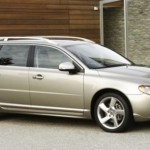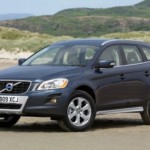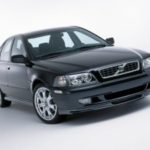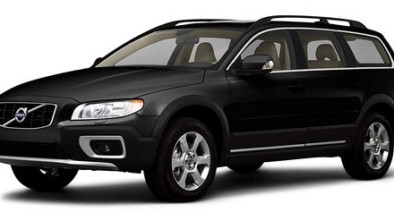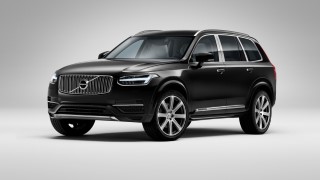Volvo V70 2nd Gen 2000 - 2007 - Used, advantages, disadvantages

Volvo V70
The second generation Volvo V70 was introduced in 2000 as a complete redesign and remained on the market until 2007. It was made in collaboration with Ford, and its support has been used in other Ford models. It is only offered as a station wagon version.
The differences from the first generation are huge. With the rear seats lower, the boot can be increased to 1641 liters in front-drive models. Trunk volume is slightly reduced in all-wheel drive models. Driving in the Volvo V4 is very comfortable and boasts excellent towing power of up to 70kg.
Standard safety equipment Volvo V70 includes 6 airbags, ABS i ESP, and scored 4 out of 5 stars on the Euro NCAP test.
The engines on offer are five-cylinder petrols and diesels while the most powerful versions are boosted by turbochargers. Gasoline engines develop from 140 to 260 hp while the most powerful petrol engine develops 300 hp. Diesel engines develop from 126 to 185 hp. A special engine on offer is an engine that can be used on gasoline, but also on gas and develops 140 hp and is quite rare in the used car market.
The Volvo V70 is the opposite of models of the same brand when it comes to reliability. Problems are caused by the car's ignition system, alternators, the fuel injection system and the electronics of the engine itself. The engine often breaks the timing belt, causing further engine failure. Diesel turbochargers are also known to break down.
In addition to lighting failures, there are problems with the suspension, where the front axle steering joints are being worn intensely. The rust resistance is very good and the car is very resistant to it.
Average consumption depends largely on the choice of engine. Weak diesel engines consume about 6 liters of 100km, while stronger engines consume about 8 liters for the same distance. Gasoline engines always consume a minimum of 10 liters per 100km, and stronger engines and more.
Advantages - Volvo V70
- Spaciousness
- Security equipment
- Driving behavior
- Resistance to rust
- Excellent and comfortable seats
Mane - Volvo V70
- Reliability
- Lighting
- Steering wheel idle
Retrieved from: auto-mane.com
Engines - Volvo V70 2nd Gen 2000 - 2007
Gasoline engine
| Model | Engine code | Years | Max. power | Max. torque at rpm. | Engine displacement | Comment |
|---|---|---|---|---|---|---|
| 2.0T | B5204T | 2000 – 2004 Feet | 163 HP (120 kW) | 240 Nm at 2200–4800 | 1,984 cc | A regular five-cylinder with low-pressure turbo |
| 2.0T | B5204T5 | 2004 – 2007 Feet | 180 HP (132 kW) | 240 Nm at 2200–5000 | 1,984 cc | A regular five-cylinder with low-pressure turbo |
| 2.4 | B5244S2 | 2001 – 2007 Feet | 140 HP (103 kW) | 220 Nm at 3300 | 2,435 cc | A regular five-cylinder |
| 2.4 | B5244S | 2001 – 2003 Feet | 170 HP (125 kW) | 230 Nm at 4500 | 2,435 cc | A regular five-cylinder |
| 2.4 | B5244S | 2003 – 2007 Feet | 170 HP (125 kW) | 225 Nm at 4500 | 2,435 cc | A regular five-cylinder |
|
B5244T3 | 2000 – 2003 Feet | 200 HP (147 kW) | 285 Nm at 1800–5000 | 2,435 cc | A regular five-cylinder with low-pressure turbo |
|
B5254T2 | 2003 – 2007 Feet | 210 HP (154 kW) | 320 Nm at 1500–4500 | 2,521 cc | A regular five-cylinder with low-pressure turbo |
| T5 | B5234T3 | 2000 – 2004 Feet | 250 HP (184 kW) | 330 Nm at 2400–5200 | 2,319 cc | A regular five-cylinder with high-pressure turbo |
| T5 | B5244T5 | 2005 – 2007 Feet | 260 HP (191 kW) | 350 Nm at 2100–5000 | 2,401 cc | A regular five-cylinder with high-pressure turbo |
|
B5254T4 | 2004 – 2006 Feet | 300 HP (221 kW) | 350 Nm at 1800–6000 | 2,521 cc | A regular five-cylinder with high-pressure turbo |
|
B5254T4 | 2006 – 2007 Feet | 300 HP (221 kW) | 400 Nm at 1950–5250 | 2,521 cc | A regular five-cylinder with high-pressure turbo |
|
B5254T4 | 2004 – 2007 Feet | 300 HP (221 kW) | 400 Nm at 1950–5250 | 2,521 cc | A regular five-cylinder with high-pressure turbo |
Diesel engine
| Model | Engine code | Years | Max. power at rpm | Max. torque at rpm. | Engine displacement | Comment |
|---|---|---|---|---|---|---|
| 2.5D (TDI) | D5252T | 2000 – 2001 Feet | 140 hp (103 kW) at 4000 | 290 Nm at 1900 | 2,460 cc |
|
| 2.4D | D5244T2 | 2001 – 2005 Feet | 130 hp (96 kW) at 4000 | 280 Nm at 1750–3000 | 2,401 cc | Regular five-cylinder with turbine |
|
D5244T | 2001 – 2005 Feet | 163 hp (120 kW) at 4000 | 340 Nm at 1750–3000 | 2,401 cc | Regular five-cylinder with turbine |
| 2.4D | D5244T7 | 2005 – 2007 Feet | 126 hp (93 kW) at 4000 | 300 Nm at 1750–2250 | 2,400 cc | Regular five-cylinder with turbine |
| 2.4D | D5244T5 | 2005 – 2007 Feet | 163 hp (120 kW) at 4000 | 340 Nm at 1750–2750 | 2,400 cc | Regular five-cylinder with turbine |
|
D5244T4 | 2005 – 2007 Feet | 185 hp (136 kW) at 4000 | 400 Nm at 2000–2750 | 2,400 cc | Regular five-cylinder with turbine |
Gas
| Model | Engine code | Years | Max. power at rpm | Max. torque at rpm. | Engine displacement | Comment |
|---|---|---|---|---|---|---|
| Bi-Fuel CNG | B5244SG | 2001 – 2007 Feet |
|
|
2,435 cc |
|
| Bi-Fuel LPG | B5244SG2 | 2002 – 2005 Feet |
|
|
2,435 cc |
|
Source: wikipedia.org3
Recommendation of similar texts:

Hi there, I am Mladen and I am an auto enthusiast. I started this blog years ago to help like minded people share information about latest cars, car servicing ideas, used car info, exotic cars, and auto technology. You will find helpful articles and videos on a wide variety of cars - Audi, Mercedes, Toyota, Porsche, Volvo, BMW and much more. Ping us if you have anything cool to share on latest cars or on how to make older cars more efficient, or just want to say hi!

